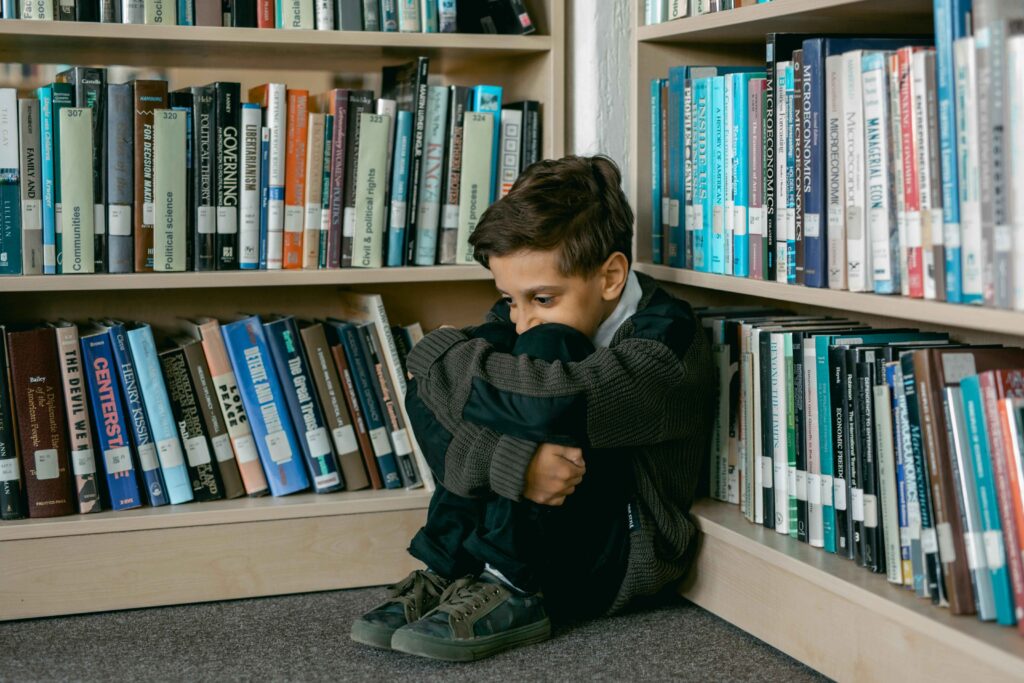Can Someone Sue a School if Their Child Got Hurt? A school injury creates disturbing situations for students together with their parents. Many parents think about taking legal action after their child gets harmed at school but wonder if they can actually file a lawsuit against educational institutions. The article investigates both the legal foundations which may enable schools to be responsible for injuries and the protocol parents should follow when considering school litigation.
Understanding School Liability:
What is School Liability?
Definition: A school district alongside its schools maintain legal duties toward student safety keeping students safe from harm.
Negligence: Every school faces potential legal responsibility over injuries resulting from negligent staff actions when they fail to keep their students safe from harm.

Types of Injuries Commonly Incurred at School:
- Physical Injuries: School activities combined with physical education and recess result in physical accidents that cause broken bones plus sprains along with cuts and bruises.
- Emotional and Psychological Injuries: Bullying and harassment create emotional stress that can become grounds for taking legal action.
- Injuries from Unsafe Conditions: Students may suffer injuries when encountering unsafe premises elements including broken equipment alongside inadequate supervision and slippery floors.
Legal Principles Governing School Liability:
Duty of Care:
Definition: A school is required by law to establish safe student environments by both behaving responsibly with facilities and continuously supervising activities.
Standard of Care: As a responsible institution schools must provide care which meets reasonable standards when compared to other operations in similar situations.
Proving Negligence:
To successfully sue a school for a child’s injury, parents must typically prove the following elements:
- Duty of Care: A school needed to take responsibility for keeping students safe.
- Breach of Duty: Almost every educational institution Sue possesses a legal obligation to maintain safety standards yet it breached this responsibility through its acting negligently or non-actively.
- Causation: The defective duty of care led to the resulting injury.
- Damages: As a result of the situation the child sustained actual physical injuries.
Sovereign Immunity:
- Definition: Sovereign immunity protection shields numerous public schools from liability when certain conditions apply to their operations.
- Exceptions: Certain states within the United States provide exceptions Sue to sovereign immunity enabling lawsuits to proceed under two major conditions including negligence combined with unsafe school environments.

Common Scenarios for School Injuries:
Accidents During School Activities:
- Physical Education: During sports activities and physical events students can seek compensation from schools which failed to maintain proper safety guidelines.
- Field Trips: The educational institution bears liability for accidents throughout school-sponsored expeditions whenever insufficient monitoring or safety maintenance standards exist.
Bullying and Harassment:
- Emotional Distress: Schools become responsible for emotional and psychological injuries that result from failure to address bullying or harassment activities.
- Legal Precedents: According to court rulings schools must guard their students from known potential harms including incidents of bullying.
Unsafe School Conditions:
- Negligent Maintenance: Damage-reporting injuries that occur because of inadequate maintenance of playground equipment or dangerous facilities allow situations resulting in liability.
- Inadequate Supervision: Schools become potentially Sue responsible Sue when their inadequate monitoring results in student injuries occurring during non-structured school activities.
When Your Child Gets Hurt While At School What You Need To Do:
Immediate Actions:
- Seek Medical Attention: Make sure your child gets proper medical treatment for their wounds.
- Document the Incident: Record relevant information about the incident that includes when it occurred where it took place and all other surrounding conditions. You should collect all evidence you can find which includes both images and personal accounts from witnesses.
Reporting the Incident:
Notify School Officials: Make a report about the injury to the school authorities during the earliest possible opportunity. Creating an official record serves as the next step after incident occurrence.
Request an Incident Report: Request Sue the school provide you with a copy of all recorded incidents since this information Sue will serve you well if legal action becomes necessary.
Consult with Legal Counsel:
Seek Legal Advice: Contact an attorney practicing in personal injury law and education law after you suspect your child sustained their injury due to negligence.
Evaluate Your Case: With the help of legal counsel your case evaluation will include assessing the potential success and damage amounts.
Leading a Lawsuit Against a School Becomes a Necessary Step When This Occurs:
Legal Process Overview:
- Filing a Claim: After you decide to move forward your attorney will file a claim against the school system or district.
- Discovery Phase: During the discovery phase of litigation parties will collect documentation together with statements from witnesses alongside expert analyses.
- Negotiation and Settlement: An overwhelming number of school Sue cases end before encountering a courtroom. Your legal representative will conduct negotiations with the opposite party to establish a reasonable outcome which both sides accept.
- Trial: When a settlement proves impossible the case progresses to trial so a judge or jury determines who is at fault and what awards the student requires. You can contact us here.
- Compensatory Damages: Damages will typically be awarded to you to pay for medical costs and physical pain endurance and additional related expenses when you succeed in your case.
- Punitive Damages: The award of punitive damages for school-related gross negligence serves both to punish the school system and discourage schools from repeating such conduct.
Conclusion:
School injuries create distressing experiences that affect schoolchildren along with their parents similarly. It becomes essential for parents who want to file lawsuits to Sue understand how law defines school liability. Schools can face liability in lawsuit when children suffer injuries caused by negligence but understanding the process requires thorough evaluation of all relevant injury circumstances. Through correct steps and consultation with legal advisers’ parents can move through this complex scenario to defend their child’s rights.


